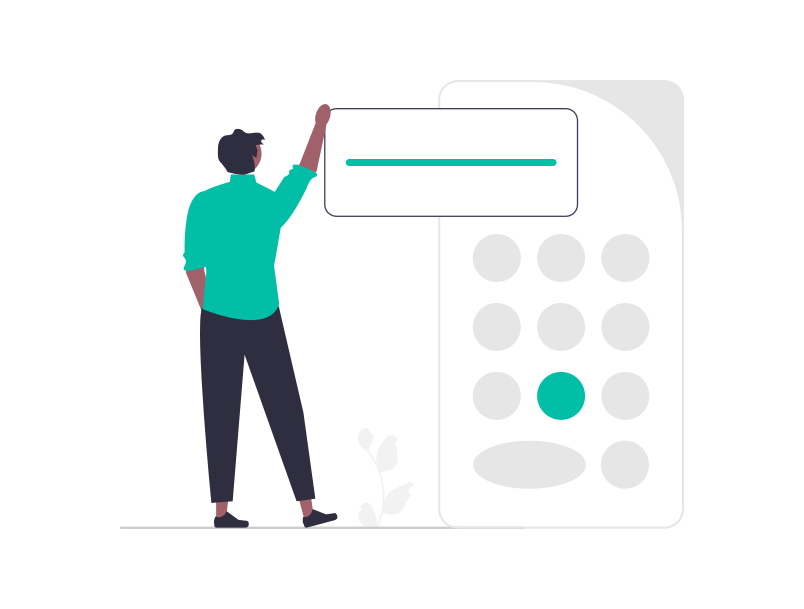How To Calculate Customer Lifetime Value

Along with customer acquisition cost (CAC), lifetime customer value (LTV) is one of the most important metrics a business can track and is a key indicator of the viability of the model when paired with CAC and payback period (the amount of time it takes for the customer to spend what it cost the business to acquire them).
In this blog we’re going to explain what customer lifetime value is, how to calculate it and how to increase it.
What is Customer Lifetime Value?
Customer lifetime value is the metric which represents the revenue a customer is worth to a business over the entire span of that customer’s relationship with a business.
It is not the same as average order value (AOV) which represents the revenue a business earns from a customer’s first purchase. LTV accounts for on-going value, including cross-sells and up-sells. Therefore the longer a customer stays with a company, and the more they purchase from that company, the higher the LTV. A healthy LTV indicates that the business has a good product/service catalogue and/or good lower funnel marketing mechanisms that incentivise repeat purchases. It may indicate that the company has good customer support and communications, which reduce churn and increase brand loyalty.
When LTV is divided by CAC to give a ratio, that ratio indicates the viability of the business by revealing whether the business can sustainably afford to acquire customers based on what they spend.
Why is customer lifetime value so important?
It’s extremely important for any business to have a good idea of what their customer lifetime value is. It will help you calculate your marketing budget, make long-term investment decisions and decide between different channels to market.
By analysing customer lifetime value of different audience segments, you can make strategic targeting decisions and/or plan ways to improve retention and reduce churn among problem segments.
When a business measures, and pays attention to, its LTV it can focus its efforts on increasing it, which should increase revenue and profitability. It can help you identify potential flaws and vulnerabilities, and new areas of opportunity.
Simply put – if you’re not tracking customer lifetime value, you’re flying blind.
How Do You Calculate Customer Lifetime Value?
There are various ways to calculate customer lifetime value. But essentially the formula is:
LTV = average customer value x average customer lifespan
In order to get average customer value, you will typically go through the following steps:
1) Calculate average purchase value. APV = Total revenue/number of orders.
2) Calculate average purchase frequency. APF = Number of purchases/number of customers.
3) Calculate average customer value. ACV = APV x APF.
Once you have your ACV, you need to multiply it by your average customer lifespan. This is a little trickier, especially for startups. Established businesses with a wealth of internal sales data will be able to calculate this accurately based on historical performance. They’ll know how long a customer typically stays with them for.
For a start-up it can be a little more difficult. You may have some early sales data, but how do you know what your average lifetime is?
Without sufficient data to make a judgement from historical performance, nor enough to use machine learning or regression to predict it, most startups tend to assume a lifetime of 3-5 years. You can then refine the estimate as you gather more data over time.
There’s one further thing to mention here – our formula above refers to revenue-based lifetime value. Many organisations tend to make it profit-based by multiplying the LTV by their profit margin to give a figure which is more useful for long-term financial planning.
How Does Customer Lifetime Value Relate To Customer Acquisition Costs?
One of the most important uses of customer lifetime value is to calculate your LTV/CAC ratio. This ratio can be a core part of measuring marketing campaigns and planning future campaigns.
Customer lifetime value / customer acquisition cost = LTV/CAC RATIO
Generally businesses aim for a ratio of 3 or more. That indicates that you can expect the average customer to spend 3x as much over their lifetime as it cost to acquire them.
Now, it’s important to say that this varies hugely. Some businesses operate with lower ratios than this – but they know that they can operate at reduced margins over the long term. As a startup, without the capital and data available that enterprises have, you should aim for 3 or more for extra cushion.
Another metric that is worth paying attention to here is payback period. Payback period is the amount of time it takes to recoup the cost of acquiring a customer. Let’s say you have a lifetime value of £150, and it costs you £50 to acquire a new customer. Great – you have an LTV/CAC ratio of 3. However, on average it takes a customer 6-8 months to spend their first £50. You’ll need to factor that in to your runway calculations – because for those first few months, acquiring that customer lost you money.
Payback period varies hugely by industry. But it’s a key metric to be aware of and try to reduce if possible.
How To Increase Customer Lifetime Value
Improving the LTV/CAC ratio is a key method to achieve greater profitability. Clearly, there are two main approaches to this – increasing LTV or reducing CAC.
Increasing LTV is probably the harder of the two options, but it’s still incredibly important to constantly experiment to find ways to do it.
Here are some of the key approaches you might use:
1) Improve re-order rate. By increasing the re-order rate, you increase the average customer value. You can do this with lower-funnel re-engagement strategies such as email marketing, or retargeting campaigns, or cross and up-sell special offers. You can also do it by improving the product and brand experience a customer has – if the product experience exceeds expectations, and the customer service and communications are excellent, a customer is far more likely to re-order.
2) Improve average order value. With product, branding and cross-sales at checkout, you can increase your average order value.
3) Improve churn/retention rate. By having a continuous cycle of new product/feature development, great branding and high quality communications across social media and emails, you can reduce the rate that customers churn.
Overall, what it boils down to is this: you can improve customer lifetime value by providing a great product, great service, and great ongoing communications. Companies like Amazon have been so successful because they have maintained a relentless obsession with their customers – their experience, their behaviour, their wants and their pet peeves. By doing this they’ve been able to increase their LTV to astronomical levels and the business has grown as a result. The key is being customer-oriented – take the time to understand the way they interact with your product, and you’ll be able to find ways to improve that interaction.
Talk to a Growth Advisor
We create a clear, focused marketing strategy by combining our expertise with your knowledge of your business.
Related Posts

What Is a Growth Marketing Manager?
Discover the ins and outs of the role of a Growth Marketing Manager.

Harness the Power of Growth Marketing for Business Success
Learn how to harness the power of growth marketing to propel your business to new heights of success.

How to Build Long-Term Sustainable Growth
Learn the essential strategies and practical steps to achieve long-term sustainable growth for your business.
